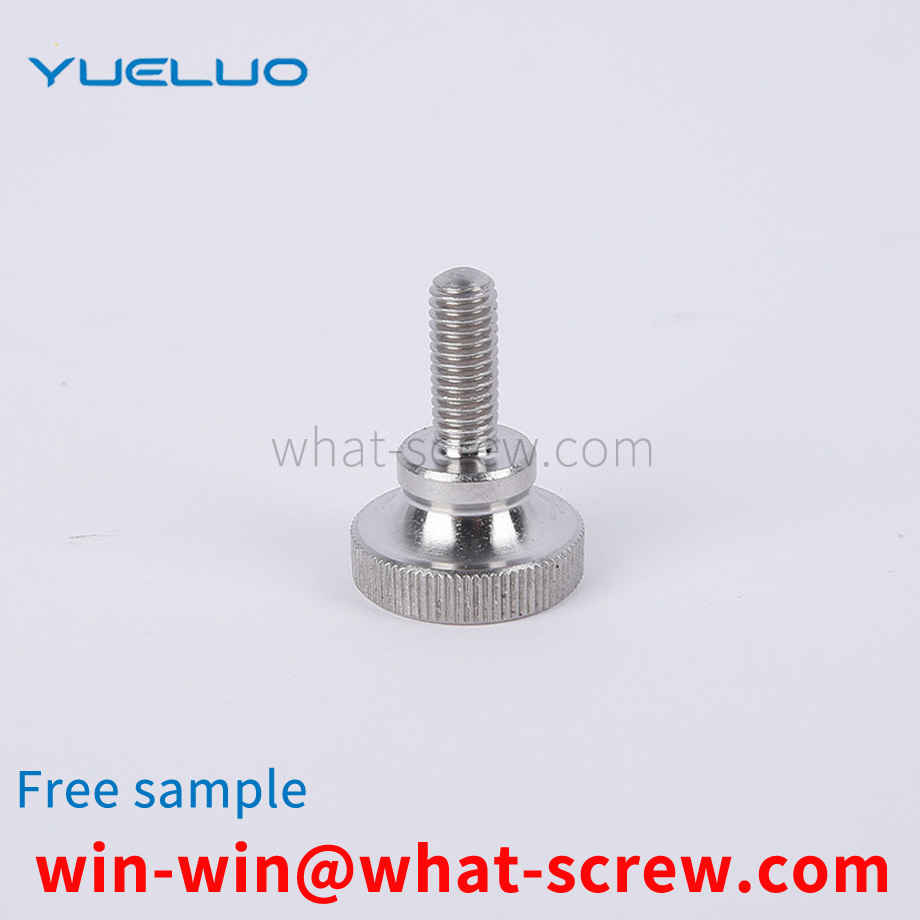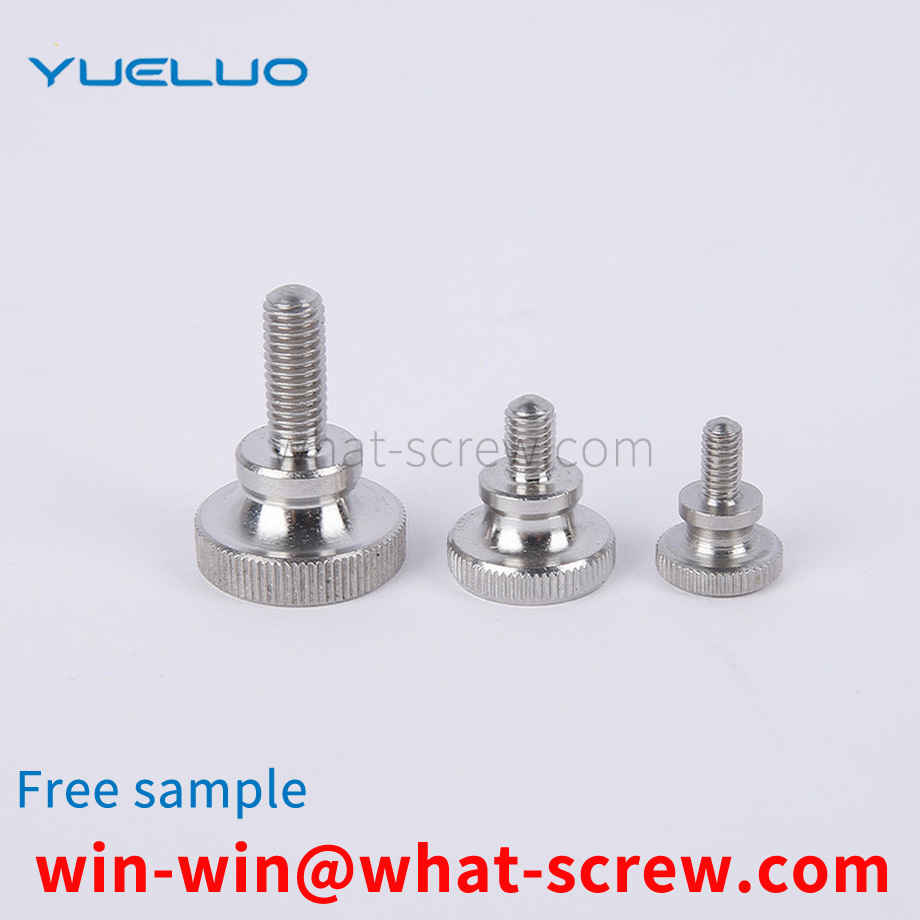Washers are common parts that are annular or annular after compression. The existing standard washers include flat washers, spring washers, serrated lock washers, saddle washers, etc. The end faces are mostly flat or flat after compression. , so it is in surface contact with the workpiece. Generally, after the two workpieces are locked by washers, bolts and nuts, the workpieces cannot move in any direction, so as to achieve the purpose of tightening the two workpieces. In actual production, some workpieces are still required to be properly translated in a certain direction after locking. In order to achieve this requirement, the usual practice is to open a waist-shaped hole on the workpiece that needs to be moved, and the zigzag-shaped bushing is fitted with a flat washer after passing through the waist-shaped hole, as shown in FIG. The edge of the hole is located in the space enclosed by the bushing and the flat washer, and a gap is formed between the workpiece and the bushing and the flat washer, so that even if the bolt passes through the flat washer, the bushing and the workpiece in turn, it is threaded and locked with the nut. tight, the workpiece can still translate along the length of its girdle hole. Obviously, this method can achieve the requirement of proper translation of the workpiece, but the following deficiencies can still be found in the actual assembly. First, before locking, the bushing, washer and workpiece are separated from each other, so it is more inconvenient to assemble; secondly, the lining is The separation structure of the sleeve and the gasket is inconvenient to manage, and the disassembled gasket and bushing are easy to lose and affect the use again.
In terms of inner hexagon, there are two versions of the national standard, one is GB70-76, the 76-year version, and the other is GB70-85, the 85-year version, most of which implement the DIN912 standard, so you should pay attention to the difference in actual business operations: GB70 -85 completely coincides with DIN912, so there is no difference in the use of the new standard, mainly the difference between GB70-76 and DIN912: for M8 series hexagonal products, the diameter of the round head of GB70-76 is 12.5MM, It is smaller than 13.27MM of DIN912. For M10 series inner hexagon products, the round head diameter of GB70-76 is 15MM, which is smaller than 16.27 of DIN912. For M12 series inner hexagon, the round head diameter of GB70-76 is 18MM. It is smaller than the opposite side 18.27 of DIN912, and the round head diameter of the inner hexagon GB70-76 of M16 and M20 series is 0.33MM smaller than that of DIN912, which are 24MM and 30MM respectively. DIN912 is 24.33MM and 30.33MM respectively. In addition, the width of the inner hexagon between the old standard and the German standard is different due to different standards. The inner side of GB70-76 is smaller, and it should be paid attention to in business operations.
Common fastening screws include self-tapping screws, fine-pitch drywall screws, traditional wood screws, and fiberboard screws. The following are the characteristics of commonly used screws, everyone should choose them reasonably. Self-tapping screws The correct application of self-tapping screws should be used for the fastening and connection of metal materials with pre-drilled holes. It has the function of automatically tapping out the internal thread on the metal body, and can complete the thread engagement with it to play a tightening role. However, due to its high thread bottom diameter, when it is used in wood products, the cut into the wood will be shallower; and because the thread pitch is small, there is less wood structure between every two threads. Therefore, it is unreliable and unsafe to use self-tapping screws for wood mountings, especially loose wood. Drywall Screws The proper use of fine-pitch drywall screws is for fastening and joining between metal studs and plasterboard. It suffers from similar drawbacks as self-tapping screws when used on wood mountings. Moreover, due to the large diameter of the head of the dry-wall screw, the embedding of the head is poor, and it is easy to cause unevenness between the head of the screw and the surface of the mounting part after installation. Traditional wood screws Before using traditional wood screws, pre-drilling holes are required on the wooden mounting parts, otherwise it is easy to cause wood cracking. In addition, since the traditional wood screws are not heat-treated, the use of electric tools can easily cause the groove shape to be damaged, and manual installation is very laborious. Fiberboard screws are relatively new types of wood screws, suitable for power tool installation. However, due to its relatively simple thread design, it still cannot effectively solve the stubborn problem of easy cracking when used on hardwood, and it does not have any advantages in screwing speed and screwing torque. [2]
flat washer is also called a flat washer. It is mainly stamped out of an iron plate. The shape is generally a flat washer with a hole in the middle. The size of this hole is generally determined according to customer requirements. There are 9 standards for flat washers in my country. From 2000 to 2002, GB/T97.3-2000, GB/T5286-2001, GB/T95-2002, GB/T96.1-2002, GB/T96.2 were approved and released respectively. -2002, GB/T97.1-2002, GB/T97.2-2002, GB/T97.4-2002 and GB/T5287-2002 Standard for flat washers. According to the performance grade of the flat washer, the author recommends the use of materials: ST12, ST13, Q235, Q215, Q195, etc. can be selected for the 100HV grade, and the surface hardness can reach about 110HV; 08F, 08Al, 10, 10F, etc. can be selected for the 140HV grade etc., the surface hardness can reach about 140HV; for 200HV and 300HV grades, 45, 50, 60, 70 or 65Mn steel should be selected, which can be quenched and tempered by heat treatment to meet the technical requirements of 200~300HV and 300~400HV. Because according to the standard, flat washers of 100HV and 140HV grades can be manufactured from mild steel. Most enterprises use Baosteel materials when selecting materials, which is convenient for cold stamping. The following is a brief description of Baosteel's standards. Compared with the BZJ407-1999 standard, there are major changes in Continuous Cold Rolled Low-Carbon Steel Plates and Strips and the enterprise standard: (1) The grades have been revised and integrated, and the grades have been changed from 8 commonly used to 5. St12 is changed to DC01; ST13 is changed to DC03; St14, St15 is changed to DC04; BSC2 is changed to DC05; St16, St14-T, BSC3 is changed to DC06. (2) The surface quality level is changed from two to three: the higher-level finishing surface (FB), the surface is allowed to have a small amount of defects that do not affect the formability and coating and plating adhesion, such as slight scratches, indentations, Pock, roll printing and oxidation color, etc. Premium Finished Surface (FC) products have no visible defects on the better of the two sides and must meet at least FB requirements on the other side. The super-advanced finishing (FD) product must not have any defects on the better side of the two sides, that is, it cannot affect the appearance quality after painting or the appearance quality after electroplating, and the other side must at least meet the requirements of FB. (3) The surface structure is modified from four to two, and the control value of surface roughness is increased. The average roughness Ra when the surface structure is pitted (D) is 0.6 μm. (4) The provisions on Si and residual elements in the chemical composition of the five grades have been cancelled, and the contents of elements such as C, S, and Alt have been revised.
The existing spring screw includes a screw rod, a spring connecting sleeve, a spring, a fixed connecting sleeve, a nut and a nut sleeve, wherein the screw rod includes a screw cap, a connecting section without threads and a threaded connecting section with threads, and the connecting section is located in the screw cap and the thread. A shaft shoulder is arranged between the connecting sections and between the connecting section and the threaded connecting section, the connecting section of the screw is sleeved with a spring connecting sleeve, a spring and a fixed connecting sleeve, the spring connecting sleeve is close to the screw cap, and the connecting sleeve is connected between the spring connecting sleeve and the fixed connecting sleeve The connection spring is connected with a threaded nut on the threaded connection section of the screw, and the nut sleeve is connected to the nut sleeve. The fixed connection sleeve is fixedly connected to the upper die of the steel mold through bolts, and the nut sleeve is welded to the lower mold of the steel mold. When clamping the mold, a professional is required to turn the screw from the lower mold to the upper mold or hook it to the upper mold with a foot and then tighten it with the wind, which is inconvenient to install, has low work efficiency, and has potential safety hazards. Contents of the utility model Yueluo Guangdong Yueluo Hardware Industry Co., Ltd. aims to provide a spring screw that is easy to operate. In order to solve the problems existing in the background technology, Guangdong Yueluo Hardware Industry Co., Ltd. adopts the following technical scheme: a spring screw, including a screw rod, an upper compression spring washer, a spring, a fixed sleeve, a lower compression spring washer, Base and fixing nut. The screw rod includes a screw cap, a connecting section without threads and a threaded connecting section with threads, the connecting section is located between the screw cap and the threaded connecting section, and a shaft shoulder is arranged between the connecting section and the threaded connecting section. The connecting section of the screw rod is sleeved with an upper compression spring washer, a spring, a fixing sleeve, a lower compression spring washer and a base, and the threaded connection section is connected with a fixing nut. A fixed sleeve is sleeved between the connection section and the threaded connection section, and the fixed sleeve is sleeved with a lower pressure spring washer and a base. The upper compression spring washer is close to the screw cap, the lower compression spring washer is fixed on the base by four screws, the spring is placed between the upper compression spring washer and the lower compression spring washer, and one end of the spring is sleeved with the upper compression spring washer , and the other end is sleeved with a fixed sleeve. For Yueluo, the diameter of the spring screw is between T20-T27. In this preferred solution, the use performance of the spring is high, which is beneficial to prolong the service life of the spring screw. For Yueluo, preferably, the thread connecting section of the screw adopts T-shaped thread. In this preferred solution, the fixing nut is tightly matched with the threaded connection section, so that the steel mold is clamped tightly. Yueluo is preferably made of 40Cr material for the fixing nut and screw. In this preferred solution, the rigidity of the fixing nut and the screw rod is high, which is beneficial to improve the usability of the spring screw. Yueluo is preferred, the spring screw parts except the fixing nut and the screw are made of 48# steel material. In this preferred solution, the production cost is low. In summary, Guangdong Yueluo Hardware Industry Co., Ltd. brings the beneficial effects: when the spring screw is used, it is only necessary to use a wrench to move the fixed nut, which is convenient for installation, disassembly and replacement, improving work efficiency and reducing production costs.
We have many years of experience in the production and sales of screws, nuts, flat washers, etc. The main products are: thin wire nuts, non-standard rivets, hexagon socket head bolts, 9-shaped anchor screws and other products, we can provide you with suitable products for you Fastener Solutions.



















 Service Hotline
Service Hotline




